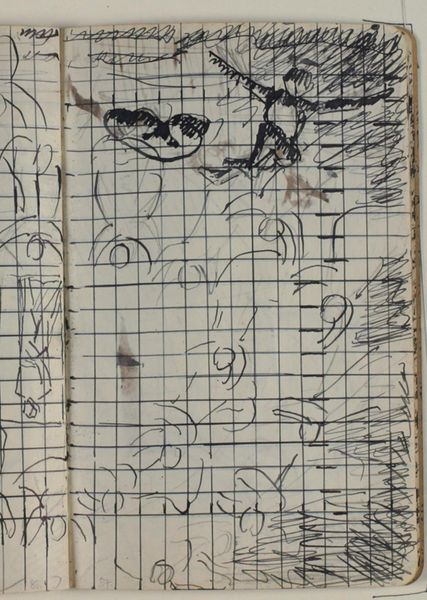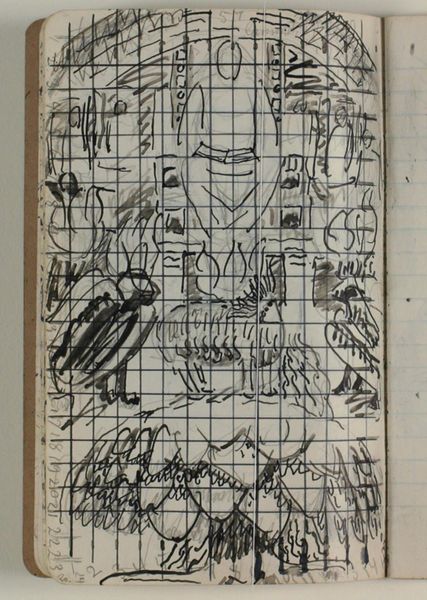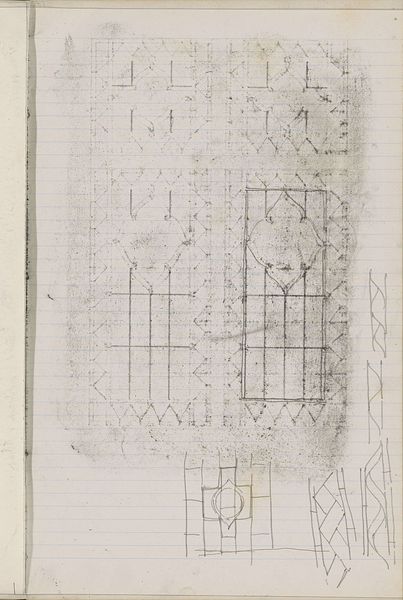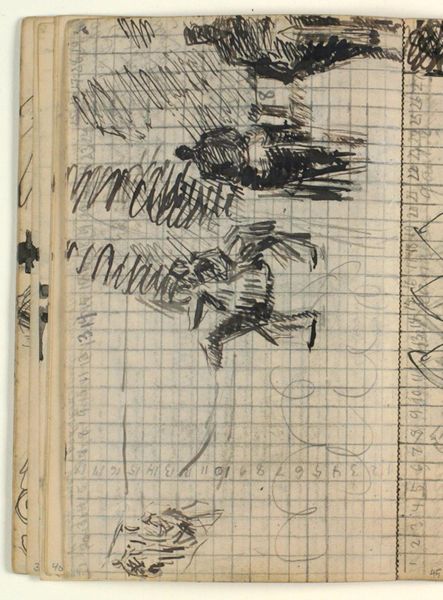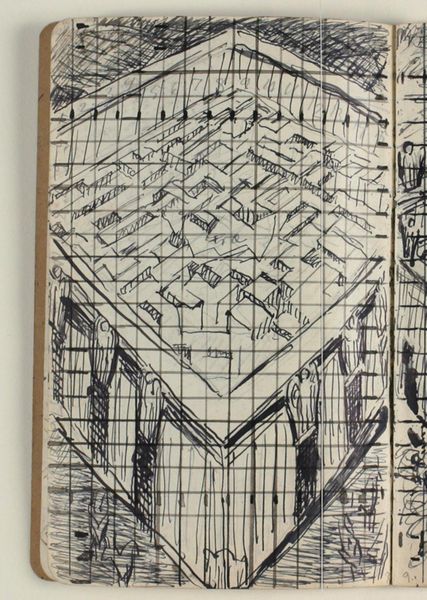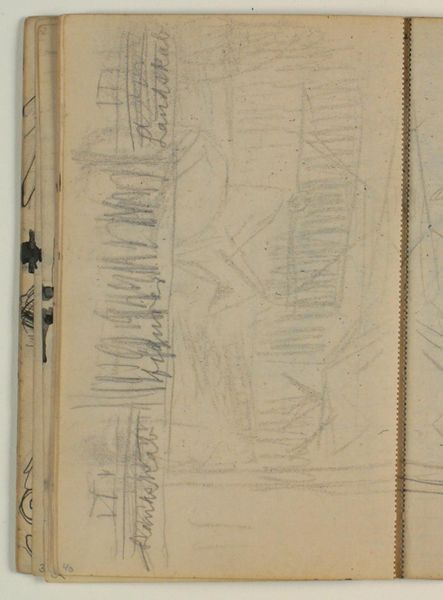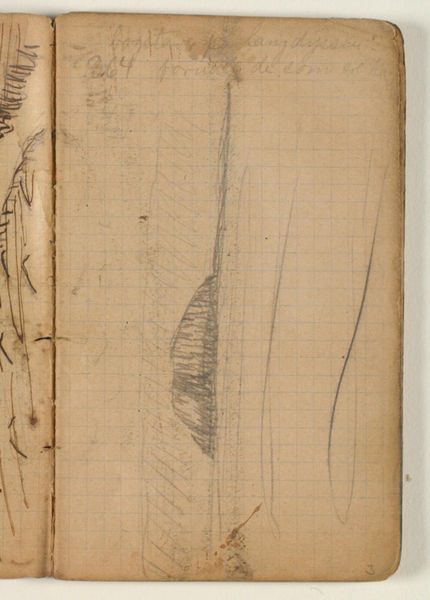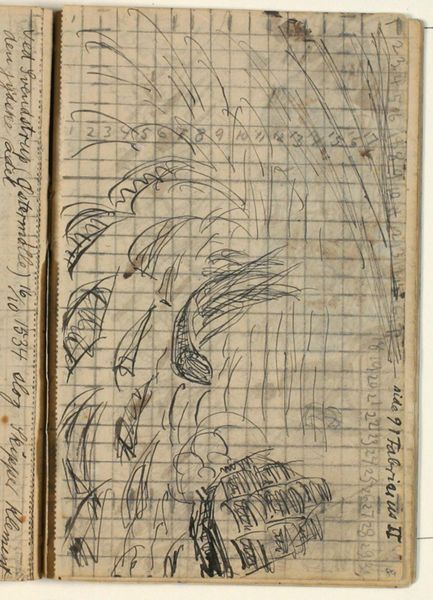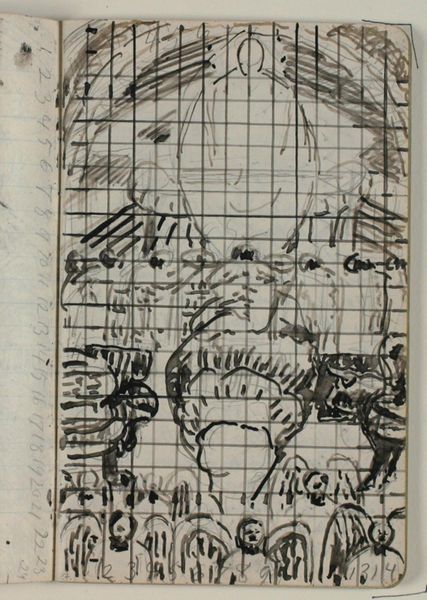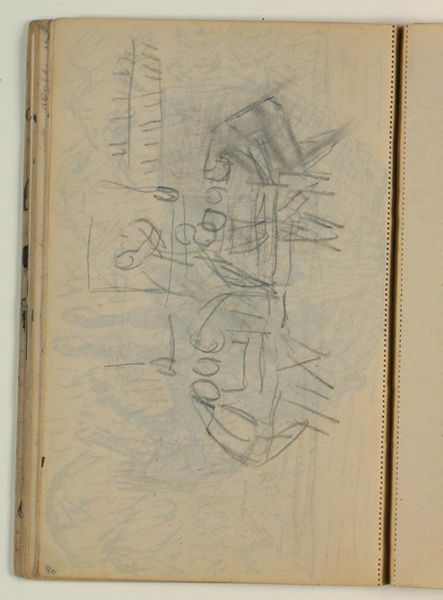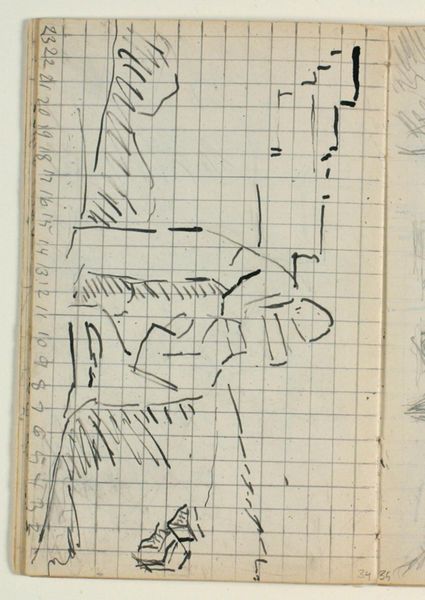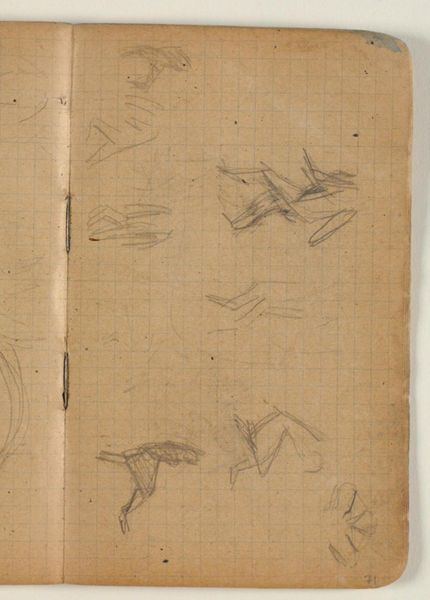
drawing, ink
#
drawing
#
ink
#
geometric
#
cityscape
Dimensions: 175 mm (height) x 109 mm (width) (monteringsmaal), 175 mm (height) x 109 mm (width) (bladmaal)
Curator: This drawing immediately strikes me as incredibly architectural. The line work and the stark, almost oppressive grid feel very regimented. Editor: Indeed. What you’re sensing reflects the work, completed in 1933-34, of Niels Larsen Stevns titled "Det himmelske Jerusalem," or "The Celestial Jerusalem" in English, currently housed at the SMK, Statens Museum for Kunst. It’s rendered in ink on paper. What narratives do you imagine unfolding within these self-contained geometric compartments? Curator: Knowing the title shifts everything, doesn't it? The rigid grid I initially saw as sterile now feels more symbolic of a planned, divine order. Those small, silhouetted figures standing on the rooftops give me an ominous feeling. Editor: I see it similarly. Given its date of creation, within the growing climate of oppressive ideologies and totalitarian architecture, this “Celestial Jerusalem” evokes conflicting interpretations. Consider the concept of utopian urban planning prevalent at that time, where perfect cities were envisioned, ostensibly offering freedom and prosperity to their inhabitants. Curator: But the use of ink lends a haunting quality, the cityscape’s perspective seeming to converge almost violently toward the top of the picture plane. How are we meant to envision collective freedom with looming dark shadows on the landscape and anonymous human figures looming on every rooftop? Editor: Perhaps Stevns is interrogating those very power dynamics. Are we seeing a genuinely idealized space or, a commentary on social control and the looming specter of mass surveillance? It would also be interesting to investigate how the religious narratives are shaped within his overall body of work. Curator: Definitely, it speaks to broader conversations around authority, societal structure and individual identity that we should definitely keep unpacking. Editor: Absolutely, there’s plenty to unpack in relation to its historic context and legacy! Thank you.
Comments
No comments
Be the first to comment and join the conversation on the ultimate creative platform.
